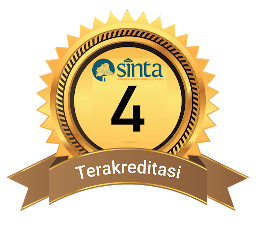Pengembangan E-Modul Kimia Berbasis POE (Predict, Observe, Explain) pada Materi Sistem Koloid
DOI:
10.29303/cep.v7i2.7175Published:
2024-12-04Issue:
Vol. 7 No. 2 (2024): Edisi NovemberKeywords:
konsep kimia, tahu, majalah kimiaArticles
Downloads
How to Cite
Abstract
The purpose of the study is to determine the level of validity and practicality of the POE (Predict, Observe, Explain) based chemistry electronic module on coloid system subject. The study is a Research and Development study which adopts the 4D model (define, design, develop, disseminate). The study population was XI-IPA students of SMAN 5 Mataram in the academic year of 2022/2023 while the sample of this research was 70 students who were taken randomly. The results of the research indeed indicate a very positive outcome. The developed POE (Predict, Observe, Explain) based chemistry electronic module on coloid system subject, has achieved high validity (feasibility) with a score of 0.79 in the valid category. Additionally, the practicality level, as measured by student responses, is very high with a practicality percentage of 84.5%. This leads to the conclusion that the developed e-module is both suitable and practical for use in the learning process. These findings underscore the quality and effectiveness of the e-module in assisting students in gaining a better understanding of chemistry materials.
References
Fitriana, D. E. N., Amelia, E., & Marianingsih, P. (2017). Penyusunan Modul Pembelajaran Berbasis Sains Teknologi Dan Masyarakat (STM) Pada Konsep Bioteknologi (Sebagai Bahan Ajar Siswa SMA Kelas XII). Biosfer: Jurnal Pendidikan Biologi, 10(2), 60-72.
Jannah., Kaspul., & Utami, N. H. (2022). Kepraktisan Modul Elektronik Menggunakan Aplikasi Sigil Berorientasi Pendekatan Saintifik Materi Perubahan Lingkungan Kelas XI Jenjang Sekolah Menengah Atas.Jurnal AL-AZHAR INDONESIA SERI SAINS DAN TEKNOLOGI, 7(3), 155-160.
Muljono, P. 2007. Kegiatan Penilaian Buku Teks Pelajaran Pendidikan Dasar dan Menengah. Buletin BNSP. 2(1): 14-23.
Nurjannati, N., Rahmad, M., & Irianti, M. (2017). Pengembangan E-Modul Berbasis Literasi Sains Pada Materi Radiasi Elektromagnetik. Jurnal Pendidikan Fisika, 4(2), 1-11.
Priyanthi, K. A., Agustini, K., & Santyadiputra, G. S. (2017). Pengembangan E-Modul Berbantuan Simulasi Berorientasi Pemecahan Masalah Pada Mata Pelajaran Komunikasi Data (Studi Kasus: Siswa Kelas XI TKJ SMK N 3 Singaraja. Jurnal KARMAPATI, 6(1), 1-10.
Retnawati, H. (2006). Validitas Reliabilitas dan Karakteristik (Panduan untuk Peneliti, Mahasiswa, dan Psikometrian). Yogyakarta: Parama Publishing.
Ridwan. (2007). Rumus dan Data dalam Aplikasi Statistika. Bandung: Alfabeta Rineka Cipta.
Sistyarini, D. I., & Nurtjahyani, S. D. (2017). Analisis Validitas Terhadap Pengembangan Handout Berbasis Masalah pada Materi Pencemaran Lingkungan Kelas VII SMP/MTS. In Proceeding Biology Education Conference: Biology, Science, Enviromental, and Learning, 14(1), 581- 84.
Sugiyono. (2019). Metode Penelitian Kuantitatif Kualitatif dan R&D. Bandung: Alfabeta.
Wulansari, E. W., Kantun, S., & Suharso, P. (2018). Pengembangan E-Modul Pembelajaran Ekonomi Materi Pasar Modal Untuk Siswa Kelas XI IPS MAN 1 Jember Tahun Ajaran 2016/2017. Jurnal Pendidikan Ekonomi, 12(1), 1-7.
Author Biographies
Baiq Adila Pratiwi Rahman, Universitas Mataram
Eka Junaidi, Program Studi Pendidikan Kimia, FKIP, Universitas Mataram
Saprizal Hadisaputra, Program Studi Pendidikan Kimia, FKIP, Universitas Mataram
License
Copyright (c) 2024 Baiq Adila Pratiwi Rahman, Eka Junaidi, Saprizal Hadisaputra

This work is licensed under a Creative Commons Attribution-ShareAlike 4.0 International License.
Authors who publish with Chemistry Education Practice agree to the following terms:
- Authors retain copyright and grant the journal right of first publication with the work simultaneously licensed under a Creative Commons Attribution License 4.0 International License (CC-BY-SA License). This license allows authors to use all articles, data sets, graphics, and appendices in data mining applications, search engines, web sites, blogs, and other platforms by providing an appropriate reference. The journal allows the author(s) to hold the copyright without restrictions and will retain publishing rights without restrictions.
- Authors are able to enter into separate, additional contractual arrangements for the non-exclusive distribution of the journal's published version of the work (e.g., post it to an institutional repository or publish it in a book), with an acknowledgement of its initial publication in Chemistry Education Practice.
- Authors are permitted and encouraged to post their work online (e.g., in institutional repositories or on their website) prior to and during the submission process, as it can lead to productive exchanges, as well as earlier and greater citation of published work (See The Effect of Open Access).






